Economy Reducing

What role do consumers play in promoting a circular economy ?
The text discusses the crucial role of consumers in promoting a circular economy, which is an economic system aimed at reducing waste and maximizing the use of resources. Consumers can contribute to this process by reducing their consumption, reusing and recycling products, and supporting sustainable brands. By making conscious choices and taking actions towards sustainability, consumers can help create a more efficient and eco-friendly economic system.

How does a circular economy differ from a linear economy ?
The circular and linear economies are distinct models with different approaches to resource use, waste management, and sustainability. The linear economy follows a one-way flow of materials, extracting resources, processing them, consuming, and discarding as waste, focusing on continuous growth through increased consumption. In contrast, the circular economy aims to minimize waste and pollution by keeping resources in use for as long as possible through recycling, reusing, and regenerating products and materials. It focuses on creating a restorative and regenerative system by design. Key differences include the flow of resources, where the linear economy moves resources in a straight line from extraction to disposal, while the circular economy keeps resources in loops through recycling and regeneration. Economic growth is tied to increased consumption and throughput of resources in a linear economy, whereas it is decoupled from finite resources in a circular economy, emphasizing quality, longevity, and efficiency. Environmental impact is high in a linear economy due to excessive resource extraction, energy use, and waste accumulation, leading to pollution, habitat destruction, and climate change. In contrast, the circular economy has a lower environmental impact because it reduces waste and pollution by extending the life cycle of products and materials. Job creation and innovation are also different, with the linear economy centering jobs around resource extraction and processing, while the circular economy encourages job creation in recycling, refurbishing, and designing for longevity and recyclability. Transitioning from a linear to a circular economy presents challenges such as changing consumer behavior, investing in new technologies, redesigning supply chains, and updating legislation to support circular practices. However, it also offers opportunities such as reducing dependence on finite resources, stimulating green jobs and innovation, improving environmental quality, and fostering resilience against resource price volatility. Overall, the circular economy offers a pathway towards a more sustainable and resilient future for our planet.

How does a circular economy contribute to waste reduction and resource conservation ?
The circular economy model promotes waste reduction and resource conservation by advocating for the reuse and recycling of materials, reducing raw material extraction, extending product lifecycles, treating waste as a resource, encouraging the sharing economy and digital services, improving resource efficiency, promoting biodegradable and renewable resources, raising consumer awareness, and supporting regulatory policies. This approach challenges traditional linear economic models and offers a sustainable solution to address environmental issues related to waste and resource depletion.

How can circular economy policies contribute to economic growth ?
Circular economy policies can drive economic growth through innovation, job creation, and sustainable business models. By promoting resource efficiency, new markets, and sustainable supply chains, these policies reduce waste management costs and enhance corporate image. Government incentives further support businesses in adopting circular practices, mitigating risks from resource shortages and commodity volatility. Ultimately, the circular economy contributes to long-term economic stability by fostering renewable resource use and reducing waste.

How can we create a sustainable economy that benefits both people and the planet ?
To create a sustainable economy that benefits both people and the planet, several strategies must be employed. These include shifting to renewable energy sources, promoting circular economy practices, encouraging green innovations and technology, implementing sustainable agriculture practices, supporting local economies and fair trade, and raising awareness and education about sustainability. By taking these steps, we can ensure the well-being of current and future generations while minimizing waste, reducing environmental impacts, and conserving natural resources.

How can circular economy policies be applied to different industries ?
The circular economy is a concept aimed at reducing waste and maximizing resource use across various industries. Here are key ways to apply circular economy policies in different sectors: 1. **Manufacturing**: Implement resource efficiency, remanufacturing, design for disassembly, and sustainable supply chain management. 2. **Agriculture**: Adopt crop rotation, composting, precision farming, and aquaponics systems. 3. **Energy**: Utilize renewable energy sources, improve energy efficiency, implement waste-to-energy solutions, and develop smart grids. 4. **Fashion**: Use sustainable materials, promote rental and secondhand markets, establish closed-loop production, and ensure transparency and traceability. 5. **Food and Beverage**: Reduce food waste, minimize packaging, upcycle byproducts, and conserve water. 6. **Construction**: Employ modular design, use green building materials, incorporate energy-efficient designs, and plan for deconstruction.
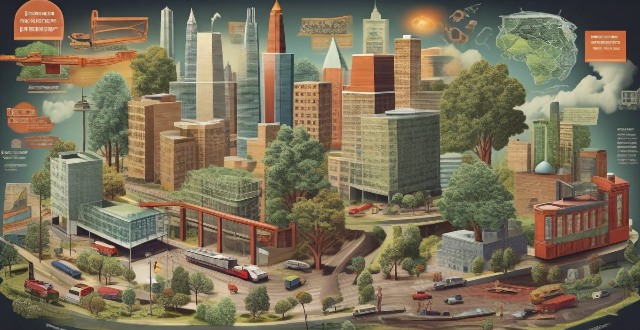
What are some successful examples of circular economy policies ?
The circular economy is a sustainable economic model that aims to minimize waste and pollution by keeping resources in use for as long as possible. Successful examples of circular economy policies include the European Union's Circular Economy Package, Netherlands' National Circular Economy Programme, China's Circular Economy Promotion Law, Japan's Sound Material-Cycle Society Act, and state-level initiatives in the United States. These policies focus on waste reduction, resource efficiency, extended producer responsibility, product stewardship, and public-private partnerships to promote a more sustainable future.

In what ways can technology support the growth of a circular economy ?
Technology plays a crucial role in supporting the growth of a circular economy by enabling efficient use of resources, reducing waste, and promoting sustainable practices. It can improve resource management, reduce waste through recycling technologies and 3D printing, promote sustainable practices with carbon footprint calculators and green software, support circular business models like sharing economy platforms and product as a service models, and raise awareness about sustainable practices through online courses and social media campaigns.
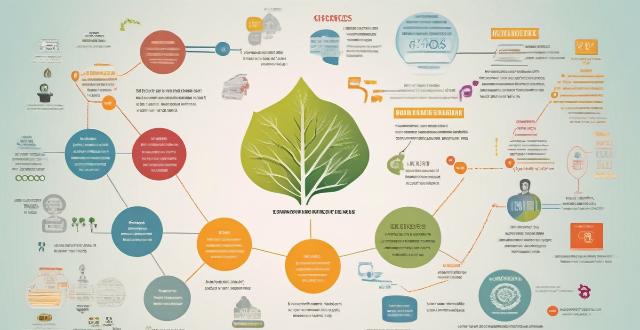
Why is the concept of a circular economy important for sustainable development ?
The circular economy, an economic system that minimizes waste and maximizes resource use, is crucial for sustainable development. It helps reduce resource depletion, waste, and pollution, while providing economic benefits, fostering innovation, and promoting social equity. By transitioning to a circular economy, we can ensure long-term sustainability and preserve resources for future generations.

Can you provide some examples of successful circular economy models ?
The circular economy is a regenerative system that aims to keep resources in use for as long as possible, extracting the maximum value from them while incurring the least waste. Some examples of successful circular economy models include: 1. Reuse and recycling programs such as IKEA's furniture recycling program and Patagonia's Worn Wear program. 2. The sharing economy, where underutilized assets are shared among people, such as Airbnb and Zipcar. 3. Product as a Service (PaaS), where companies like Xerox and Philips offer their products as a service rather than selling them outright. 4. Industrial symbiosis, where industries work together to create a sustainable ecosystem by exchanging waste materials and resources, such as Kalundborg Symbiosis and Chalmers Hamn. These models demonstrate how businesses can operate sustainably by designing out waste and pollution, keeping products and materials in use, and regenerating natural systems.
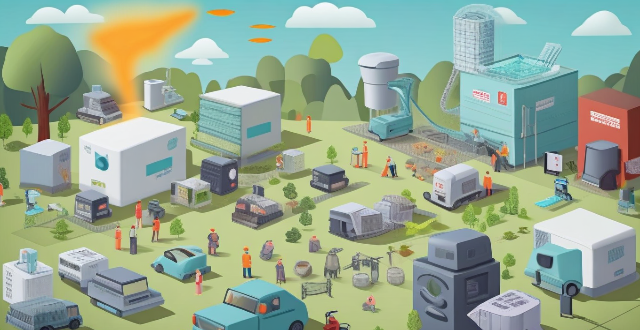
How does proper waste management aid in saving energy and reducing pollution ?
Proper waste management is crucial for conserving energy and reducing pollution. It involves strategies like composting organic waste to reduce methane emissions, enhancing recycling to save energy in manufacturing new products, preventing environmental pollution through proper disposal, promoting sustainable practices like reduce, reuse, and recycle, and supporting the circular economy model. By adopting these measures, we can move towards a more sustainable future that conserves resources and protects our planet.
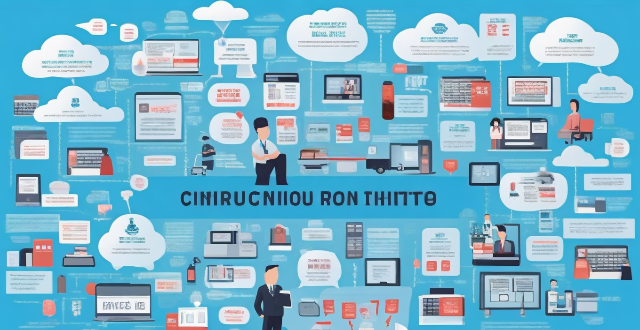
What challenges do countries face in implementing circular economy policies ?
Implementing circular economy policies is a complex process that countries face numerous challenges. These include lack of awareness and understanding, economic and industrial structure, legal and regulatory framework, market conditions and business practices, as well as social and cultural factors. Addressing these challenges is crucial for the successful implementation of circular economy policies, which can bring significant environmental and socioeconomic benefits.

What role does renewable energy play in reducing carbon footprint ?
Renewable energy is crucial in reducing carbon footprint as it is obtained from natural resources and does not emit harmful greenhouse gases. It benefits the environment, economy, and society by mitigating climate change, reducing dependence on imported fuels, and providing affordable energy to remote areas. Solar, wind, hydro, geothermal, and biomass energy are types of renewable energy sources. However, challenges such as cost, intermittency, storage, and grid integration need to be addressed. Continued investment and innovation can make renewable energy more accessible and affordable for everyone.

How might a lunar base influence the global economy and job market ?
The establishment of a lunar base could significantly impact the global economy and job market by increasing investment in space technology, creating new industries, driving innovation, and fostering international collaboration. It could also create numerous job opportunities and expand educational opportunities focused on space-related disciplines.

How do circular economy principles apply to supply chain management, and what benefits do they bring in terms of climate change adaptation ?
The circular economy is a regenerative system that replaces the "end-of-life" concept with reducing, alternatively reusing, sharing, repairing, refurbishing, remanufacturing and recycling existing materials and products. This approach minimizes waste and pollution, extends product lifecycles, and helps to mitigate climate change. In supply chain management, applying circular economy principles can bring significant benefits in terms of climate change adaptation. The key principles of circular economy in supply chain management include design for recycling and reuse, extended producer responsibility (EPR), circular procurement, collaborative partnerships, resource efficiency, digital tracking and transparency, reduction in greenhouse gas emissions, conservation of natural resources, increased resilience, innovation and economic opportunities, and improved waste management. By adopting these practices, organizations can contribute to a more sustainable economy that reduces environmental impacts and builds resilience against the effects of a changing climate.
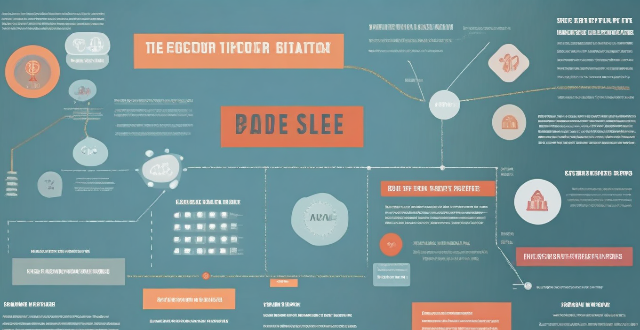
How long does it typically take for an economy to recover from a recession ?
Recovering from a recession is a complex process that can take several months to multiple years, depending on various factors. The initial phase involves emergency measures to stabilize the economy, followed by stabilization and early recovery phases where economic growth resumes. In the late recovery phase, the economy approaches its pre-recession trend growth rate, and in the post-recovery phase, it fully returns to its long-term growth trajectory. The actual timeline can differ significantly based on specific circumstances, but historical data suggests that past recoveries often took around 3-5 years.
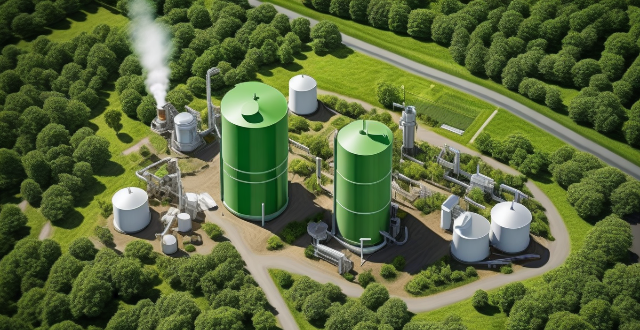
What are the economic implications of reducing greenhouse gas emissions ?
Reducing greenhouse gas emissions is essential for mitigating climate change but has economic implications. The shift to renewable energy requires initial investments but can create jobs and reduce reliance on fossil fuels. It fosters innovation and green jobs but may impact fossil fuel industries negatively. Regulatory changes like carbon pricing and compliance standards can increase operational costs for businesses. Globally, it affects market dynamics and trade, with potential for carbon leakage and competitive advantages in green technology markets. Consumer behavior might shift towards sustainable consumption and energy efficiency. Social welfare considerations include equity concerns and potential health benefits from reduced air pollution. Balancing environmental goals with economic factors is key to a successful transition to a low-carbon economy.
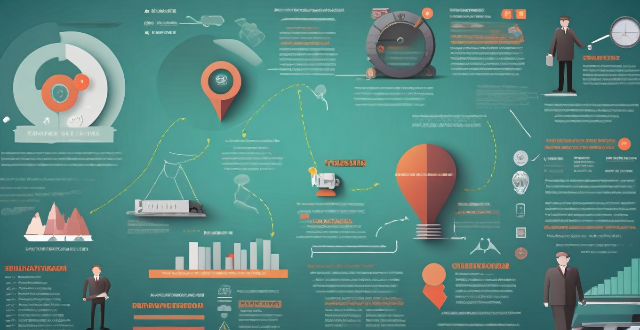
What are the main challenges faced by industries when moving towards a circular economy ?
The transition towards a circular economy presents several challenges for industries. These can be broadly categorized into economic and financial barriers, technological and innovation hurdles, market and supply chain complexities, regulatory and policy obstacles, organizational culture and capabilities, and informational and transparency issues. High upfront costs, lack of economic incentives, uncertain return on investment, limited recycling technologies, scaling up difficulties, data and knowledge gaps, fragmented supply chains, consumer behavior, markets for recycled materials, inconsistent policies, weak enforcement, legislative uncertainty, resistance to change, skills and competencies, top-down vs. bottom-up approaches, product lifecycle transparency, and eco-labeling standards are some of the main challenges faced by industries moving towards a circular economy. Collaborative efforts between government, industry, academia, and civil society are crucial to overcome these challenges.

What is the Consumer Confidence Index and how does it impact the economy ?
The Consumer Confidence Index (CCI) is a measure of consumer sentiment about the economy. It impacts the economy by serving as an indicator of economic health, influencing spending habits, affecting policy decisions, guiding business strategies, and causing market reactions. Overall, the CCI helps stakeholders make informed decisions based on consumer confidence levels.

What is the impact of private equity on the economy ?
The article discusses the impact of private equity (PE) on the economy, highlighting both its positive and negative aspects. On the positive side, PE firms can stimulate job creation by investing in underperforming companies and contributing to overall economic growth. They also bring operational expertise and financial management skills to improve efficiency and competitiveness in businesses. Additionally, PE firms can drive innovation and technology advancement by investing in research and development activities and supporting startups. However, there are negative impacts as well. PE firms often prioritize short-term gains over long-term sustainability, leading to cost-cutting measures that harm employee morale or reduce product/service quality. They may also load companies with high debt levels, increasing financial risks and potentially leading to bankruptcy. Asset stripping is another concern where PE firms sell off valuable assets for quick profits, leaving businesses weakened and less competitive. Furthermore, PE activity can contribute to increased inequality issues within an economy by concentrating wealth among a small group of investors while neglecting smaller businesses and startups struggling for funding. In conclusion, policymakers must carefully consider the potential consequences of PE activity when designing regulations aimed at promoting sustainable economic growth and protecting stakeholder interests.
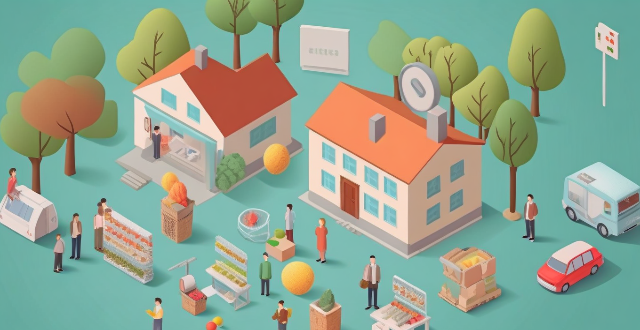
What is the correlation between housing market indicators and the overall economy ?
The housing market is a significant indicator of the overall health of an economy, intertwined with employment, consumer spending, and financial markets. Housing starts and permits signal economic growth; existing home sales reflect consumer confidence; home price indexes affect household wealth and consumer spending; mortgage rates influence home purchases; inventory levels indicate market strength or challenges; builder confidence suggests future construction trends; foreclosure rates reveal economic distress; and rental market trends show limited purchasing options. These indicators provide insight into different facets of the economy, painting a comprehensive picture of the housing market's health and its relationship with the overall economic condition.

How long does it typically take for an economic stimulus plan to have a noticeable impact on the economy ?
## Summary Economic stimulus plans are sets of measures taken by governments to boost the economy during slow growth or recession. The time it takes for these plans to have a noticeable impact on the economy depends on several factors, including the plan's size and scope, targeted sectors, implementation efficiency, and current economic conditions. Generally, short-term effects can be seen within weeks, mid-term effects within three to six months, and long-term effects after one to two years. However, these timelines are not fixed and can vary based on the specific circumstances of each plan.

What are the most effective strategies for reducing climate loss and damage ?
This article outlines key strategies for reducing climate loss and damage, including transitioning to renewable energy sources, improving energy efficiency, promoting afforestation and reforestation, adopting sustainable agriculture practices, reducing waste and increasing recycling efforts, exploring carbon capture and storage technologies, and fostering international cooperation and policy initiatives.

How can individuals contribute to reducing the effects of climate change ?
The article discusses ways individuals can contribute to reducing the effects of climate change, including adopting renewable energy sources, reducing carbon footprint, conserving water, reducing waste and recycling, sustainable living practices, advocacy and education, and energy efficiency in homes.
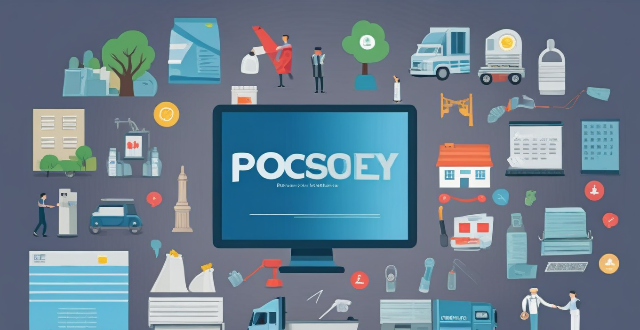
How do circular economy policies promote sustainability ?
Circular economy policies promote sustainability by reducing resource consumption, minimizing waste and pollution, fostering economic growth within ecological limits, creating social benefits and jobs, and encouraging systemic change and collaboration. Key practices include promoting product longevity, eco-design, zero-waste initiatives, clean technologies, circular business models, green jobs training, and multi-stakeholder cooperation. These policies aim to transition towards a more sustainable future by keeping resources in use for as long as possible while incurring the least waste.
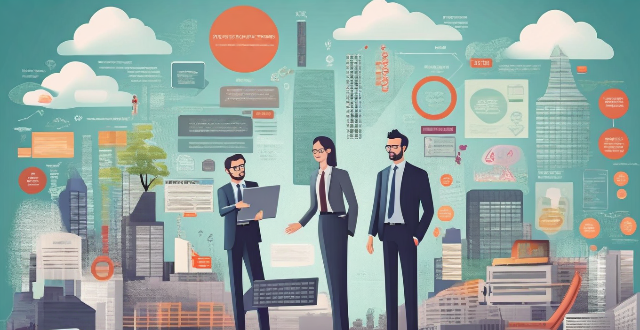
What is a circular economy policy ?
A circular economy policy is a set of regulations and guidelines aimed at transitioning from a linear to a circular economic model. This approach focuses on reducing, reusing, recycling, and recovering resources to minimize waste and pollution while creating economic opportunities. Key characteristics include reducing resource input, optimizing product lifespan, encouraging reusable goods, supporting second-hand markets, ensuring material recovery, investing in recycling infrastructure, facilitating energy and nutrient recovery, fostering designs for deconstruction, and promoting Cradle to Cradle approaches. Benefits of such policies include resource efficiency, waste reduction, job creation, increased resilience, and innovation. Examples include extended producer responsibility, deposit return schemes, green procurement, and resource taxation.

How can circular economy policies improve resource efficiency ?
Circular economy policies enhance resource efficiency by promoting sustainable practices like product redesign, encouraging reuse and sharing, maximizing recycling, reducing waste, supporting innovation, and building capacity for sustainable practices.
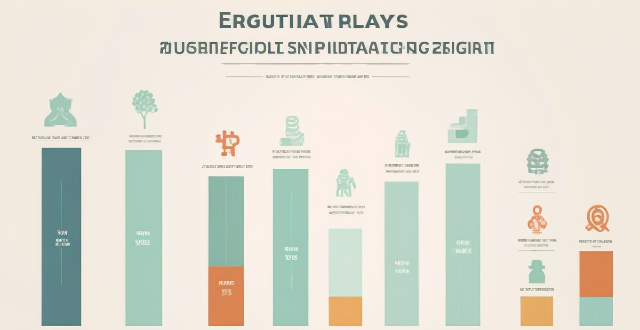
How does financial regulation affect the economy ?
Financial regulation plays a crucial role in the economy by ensuring stability, promoting fairness, and protecting consumers. It helps maintain stability by reducing systemic risks, promotes fairness by enforcing laws against fraudulent activities and protecting consumer interests, and supports economic growth by supporting infrastructure development, promoting access to finance, and encouraging foreign investment. Striking a balance between regulation and market freedom is essential for long-term prosperity.

What is a circular economy and how does it work ?
Circular Economy: An economic system designed to minimize waste and pollution by reducing, reusing, recycling materials. Key principles include reduce, reuse, recycle, regenerate, and share. It works through design for the cycle, closed-loop systems, industrial symbiosis, rethinking consumption, and government policies. Benefits are environmental sustainability, resource efficiency, economic opportunities, cost savings, and resilience. Challenges include economic disruption, infrastructure changes, consumer behavior, and policy alignment.

How does meditation help in reducing exam stress ?
Meditation is a practice that has been used for centuries to promote relaxation, reduce stress, and improve overall well-being. When it comes to exam stress, meditation can be a powerful tool in helping students manage their anxiety and perform better. In this response, we will explore how meditation helps in reducing exam stress. The benefits of meditation include calming the mind, improving concentration, reducing physical symptoms of stress, and promoting better sleep. Regular meditation practice has been shown to improve concentration and attention span, which is particularly beneficial for students who need to focus on studying and retaining information for exams. By improving their ability to concentrate, they can study more efficiently and effectively. Meditation has also been found to reduce physical symptoms of stress such as headaches, muscle tension, and fatigue. By reducing these symptoms, students can feel more relaxed and better prepared for their exams. Additionally, meditation has been shown to promote better sleep by reducing stress levels and promoting relaxation. By getting enough restful sleep, students can wake up feeling refreshed and ready to tackle their exams. To practice meditation for exam stress reduction, find a quiet space where you won't be disturbed or distracted. Set a time limit for your meditation session and start with shorter sessions (5-10 minutes) before gradually increasing the duration. Focus on your breath and use guided meditation recordings or apps if you're new to meditation or struggling to focus. Practice regularly to experience the full benefits of meditation. In conclusion, meditation is a valuable tool for reducing exam stress and improving overall well-being. By calming the mind, improving concentration, reducing physical symptoms of stress, and promoting better sleep, meditation can help students feel more prepared and confident when facing their exams. Incorporating regular meditation practice into their routine can help students reap the benefits and approach their exams with a sense of calm and clarity.